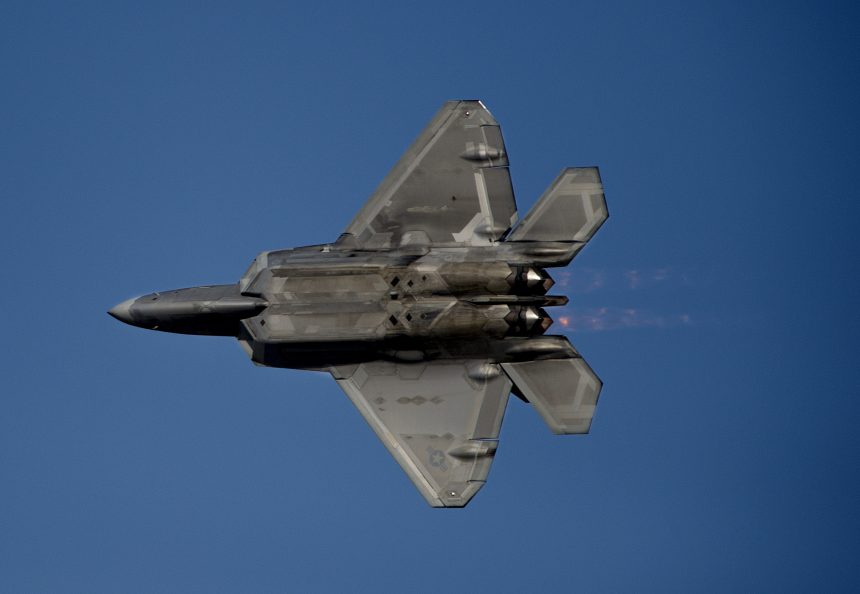Some US officials believe Russia could use its Pantsir-S1 and S-400 Triumf anti-aircraft systems to uncover secrets of the F-22 in Syria.
Almost certainly, Russia is using some of its most advanced war tech deployed to Syria to gather intelligence about U.S. latest hardware, including the F-22 Raptor multi-role stealth jets.
No aircraft is completely stealth and this is the reason why they are usually dubbed LO (Low Observable) planes.
Tactical fighter-sized stealth aircraft are built to defeat radar operating at specific frequencies; usually high-frequency bands as C, X, Ku and S band where the radar accuracy is higher (in fact, the higher the frequency, the better is the accuracy of the radar system).
However, once the frequency wavelength exceeds a certain threshold and causes a resonant effect, LO aircraft become increasingly detectable.
For instance, ATC radars, that operate at lower-frequency bands are theoretically able to detect a tactical fighter-sized stealth plane whose shape features parts that can cause resonance.
Radars that operate at bands below 300 MHz (lower UHF, VHF and HF radars), such as the so-called Over The Horizon (OTH) radars, are believed to be particularly dangerous for stealth planes: although they are not much accurate (because lower frequency implies very large antenna and lower angle accuracy and angle resolution) they can spot stealth planes and be used to guide fighters equipped with IRST towards the direction the LO planes might be.
Although such systems are not fielded in Syria, other systems, including the advanced Tu-214R spyplane, might be used to collect data that might be used to “characterize” the F-22’s signature at specific wavelengths.
“Not traditional intelligence collection per se, but could be a way to see how their RWRs receive and display an F-22’s radar emissions,” a senior Air Force intelligence official said to National Interest in an article on this subject published last year.
According to an article published by Sputnik News, Maj. Jahara ‘Franky’ Matisek of the US Air Force, Pantsir-S1 (SA-22 Greyhound) and S-400 Triumf (SA-21 Growler) anti-aircraft systems were deployed to Syria to spy on the F-22, whose role of imply a certain interconnection with other assets.
And let’s not forget that there are phases of the mission when the Raptors increase their RCS (radar cross section) and are particularly exposed to detection: when they open the bomb bay or meet the tanker for aerial refueling.
According to Matisek, these anti-aircraft systems could be “sniffing” the emissions of the F-22s and other NATO aircraft could be used to “[improve] tracking algorithms, air defense capabilities, and [enhance] the understanding of coalition weapons that are engaging in close air support and precision air strikes.”
And, needless to say, the U.S. does the same with all the Russian Su-35S, Su-30SM, S-400 and so on, operating in the crowded skies over Syria.
Image credit: U.S. Air Force










